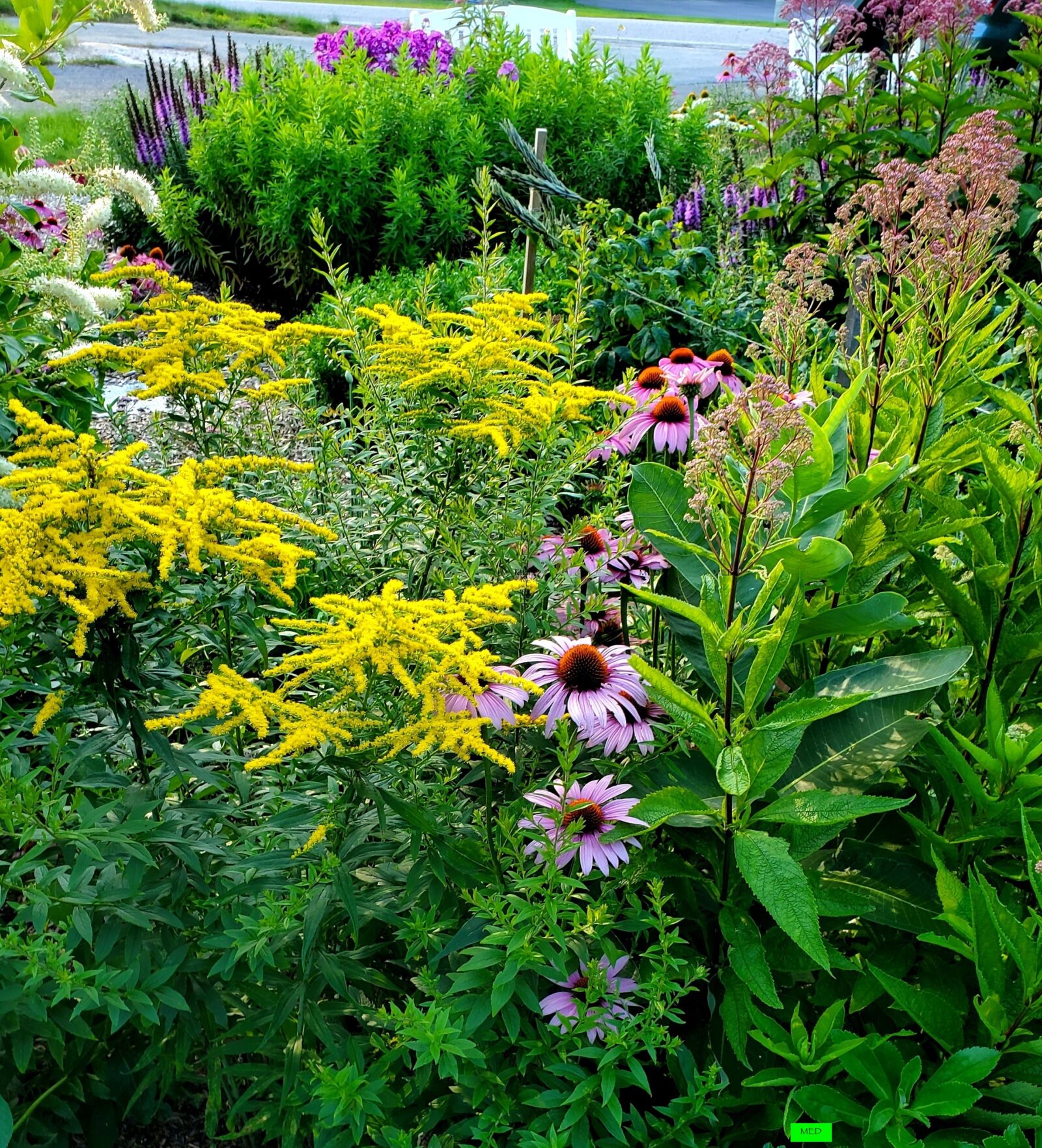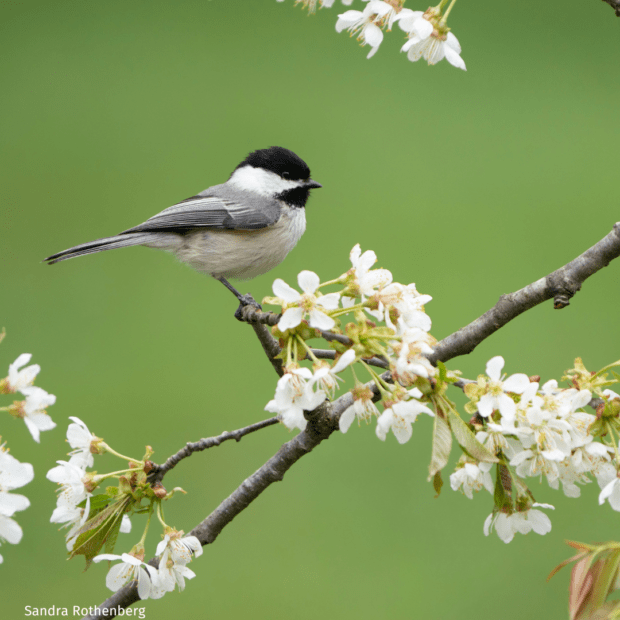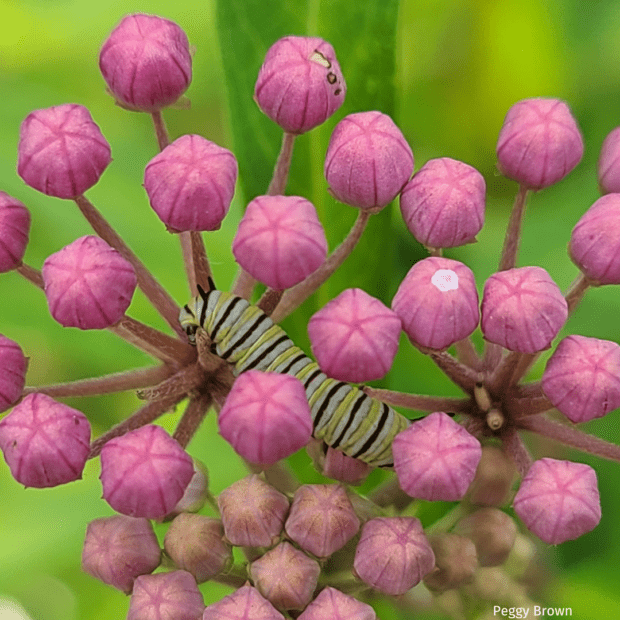We have much more to do and your continued support is needed now more than ever.
Plant 50% to 70% Native – Benefit More Wildlife

Native plants have tight relationships with wildlife, formed over many thousands of years, providing natural sources of food, cover and places to raise young. Without healthy native plant communities, wildlife cannot survive.
Just how much of my garden or landscape should be native?
National Wildlife Federation recommends that yards strive for 50% to 70% native plants to provide multi-season bloom, including flowers, shrubs, grasses, and groundcovers and trees.
This guidance takes into consideration that most people are managing existing landscapes and gardens with a variety of established trees and plants, often including vegetable and herb gardens.
When feasible, National Wildlife Federation advocates for ideally creating a space with a combination of flowering plants, shrubs and trees which are 100% native to have the ultimate benefit. Many Certified Wildlife Habitat® owners make 100% native their goal. New communities are being developed with these goals in mind. NWF’s partnership with national homebuilder Taylor Morrison has established more than 7,000 open-space acres of 100% native plants to benefit both local wildlife and nearby homeowners. In addition, as signatories to NWF’s Monarch Pledge, they have installed permanent monarch demonstration gardens which are chemical free and planted with 80% native plants including native milkweed in more than 100 communities across the country.
Recent studies clearly show the benefits to birds, butterflies, native bees, and other wildlife of landscapes and gardens with higher concentrations and diversity of native plants.
Birds
A study conducted across backyards in Washington, D.C., found that Carolina chickadees are not able to successfully raise enough young to maintain their population numbers in areas where less than 70% of the plants are native species. This research from the University of Delaware highlighted that chickadees rely on caterpillars of butterflies and moths as a primary food source for their young, and these caterpillars need native plants as their primary food source. The more native host plants, the more birds will thrive. For example, one pair of chickadees require between 6,000-9,000 insects and other invertebrates—mostly caterpillars—to successfully raise just one clutch of their young.

In fact, “Ninety-six percent of terrestrial birds rear their young on insects,” says Dr. Doug Tallamy. Because native insects, in particular butterflies and moths, did not evolve with non-native plants, most lack the ability to process the non-native plants’ chemical defenses and cannot eat them. Over 90% of herbivorous or “leaf eating” insects specialize in one or a select few species of native plants to survive.
Research on 24 NWF-certified habitats across the country—part of an ambitious four-year study, American Residential Macrosystem: Yard Futures, funded by the National Science Foundation (NSF) highlighted additional benefits to birds. This study shows the impact of Certified Wildlife Habitat®, native plant concentrated properties, in contrast to highly maintained lawn-heavy properties.
Conventional landscapes with maintained lawns tended to host “generalist” birds such as house sparrows, house finches, crows, and grackles. By contrast, those that include native plants tend to support more “specialist” birds that have evolved specific needs for resources most likely to be found in their native habitats. In addition, different bird species tended to show up in each wildlife-habitat yard, supporting greater biodiversity. Learn more about this study from the webinar: You Built It and They Came.
Butterflies

Increased percentages of native plants help more than just the birds. While the birds rely on the caterpillars supported by native plants, they also support and attract more butterflies like the monarch, swallowtails, and many others. For example, milkweed is the only host plant for monarch caterpillars.
The good news is that another research study showed that “A whopping 90 percent of Certified Wildlife Habitat® owners grow native host plants for caterpillars of butterflies and moths, compared to only 8 percent of the neighbors and 4 percent of the owners at random locations.” Planting a diverse selection of host plants not only supports the caterpillars, they also provide nectar that is the food for the adult butterflies and other pollinators. Monarchs rely on these nectar sources for the energy they need during their long migrations.
Native Bees
Between 15% to 60% of the 4,000 North American native bee species are pollen specialists who can only feed their young the protein-rich pollen from 40% of native plants. Adult bees consume nectar from these and other flowering plants for energy but without the pollen from these native plants they cannot successfully reproduce and keep their populations healthy. In fact, these pollen specialist bees often have body shapes and structures that are aligned to the shape and structures of the native plants they rely on. As such, the native plant species, with which these bees have co-evolved, are essential to their survival, and increases the argument for adding high percentages of these natives to your habitat space.
What to Plant
To increase overall quantity and diversity of native plants for where you live, make it a goal to plant as many of these critical Keystone Plants as you can. Click on the larger map to get a list of these Keystone Plants for the ecoregion where you reside. Lists include both those that entomologist Dr. Doug Tallamy and his University of Delaware research team have identified as the keystone plants that support butterfly and moth species—along with native host plants of pollen specialist bees researched by pollinator conservationist Jarrod Fowler.
Another option is to check out NWF’s Native Plant Finder which will help you identify the native host plants that support the highest numbers of butterflies and moths for your zip code. Planting a combination of flowering perennials, grasses, shrubs, and trees will help birds, butterflies, bees, and other insect species to thrive.
Not enough time to look through lists? Order Native Plant Collections, curated by National Wildlife Federation for “ready to plant” gardens shipped to your door!
Thank you for participating in the growing habitat and native plant movement launched in 1973 by National Wildlife Federation. Today, the National Wildlife Federation’s Garden for Wildlife™ / Certified Wildlife Habitat® and related programs encompass an estimated 7 million participants that have helped people create habitat gardens at home, schools, work, places of worship, and at community gardens nationwide. April has now been proclaimed as Native Plant Month and this spring marks Garden for Wildlife’s 50th anniversary and eleven years celebrating May as Garden for Wildlife Month.






















